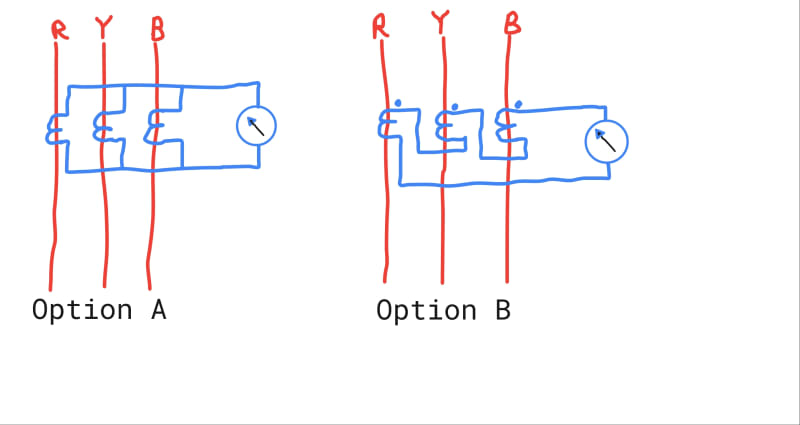Mbrooke
Electrical
- Nov 12, 2012
- 2,546
When would option B be used? Would it be applied with a low Z meter (amps) or High Z meter (volts)?


Follow along with the video below to see how to install our site as a web app on your home screen.
Note: This feature may not be available in some browsers.
Yes, CTs don't like to push current through each other.xnuke said:CTs are current sources, therefore they should never be connected in series.
Yes, that is the case in the delta metering scheme.DavidBeach said:CTs can be connected in delta, but only if there are instrument connections at each corner of the delta, as used to be the case when connecting a transformer differential. No zero sequence current would go to the instrument.
